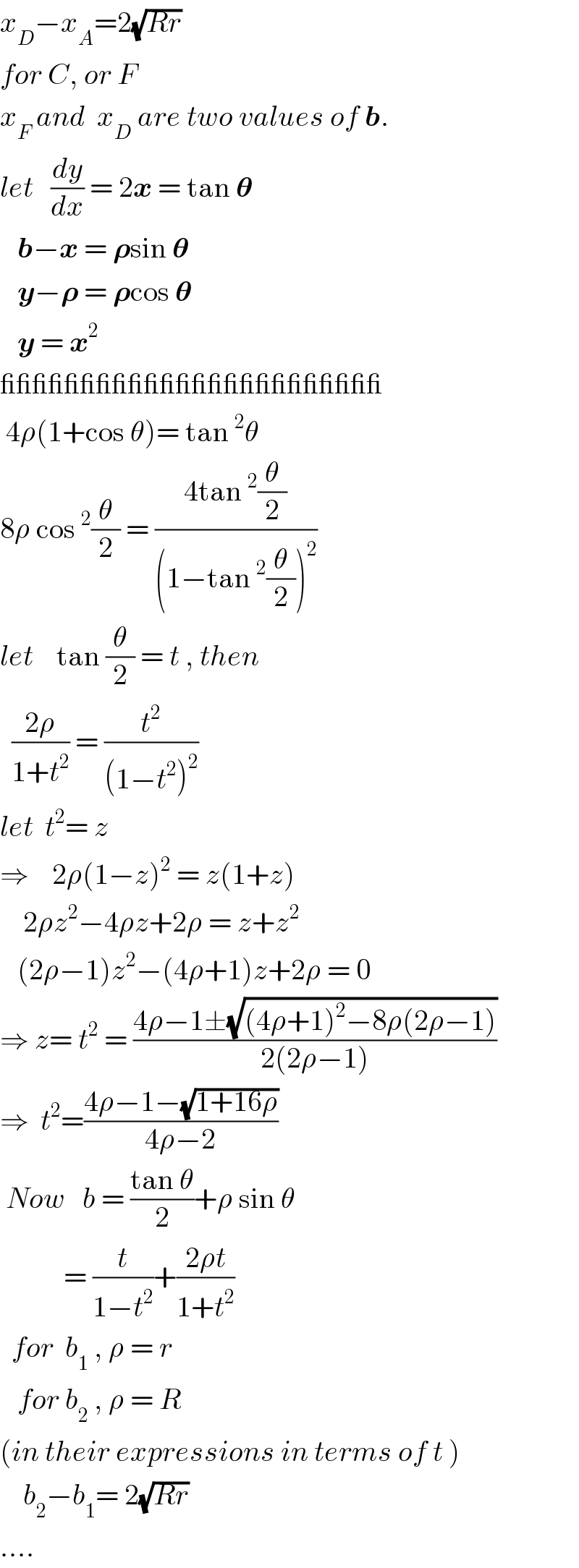
Question and Answers Forum
Question Number 44436 by ajfour last updated on 29/Sep/18

Commented by ajfour last updated on 29/Sep/18

Answered by MrW3 last updated on 29/Sep/18

Commented by MrW3 last updated on 29/Sep/18

Commented by ajfour last updated on 29/Sep/18

Commented by ajfour last updated on 29/Sep/18

Commented by MrW3 last updated on 29/Sep/18

Commented by ajfour last updated on 29/Sep/18

Commented by behi83417@gmail.com last updated on 29/Sep/18

Commented by behi83417@gmail.com last updated on 29/Sep/18

